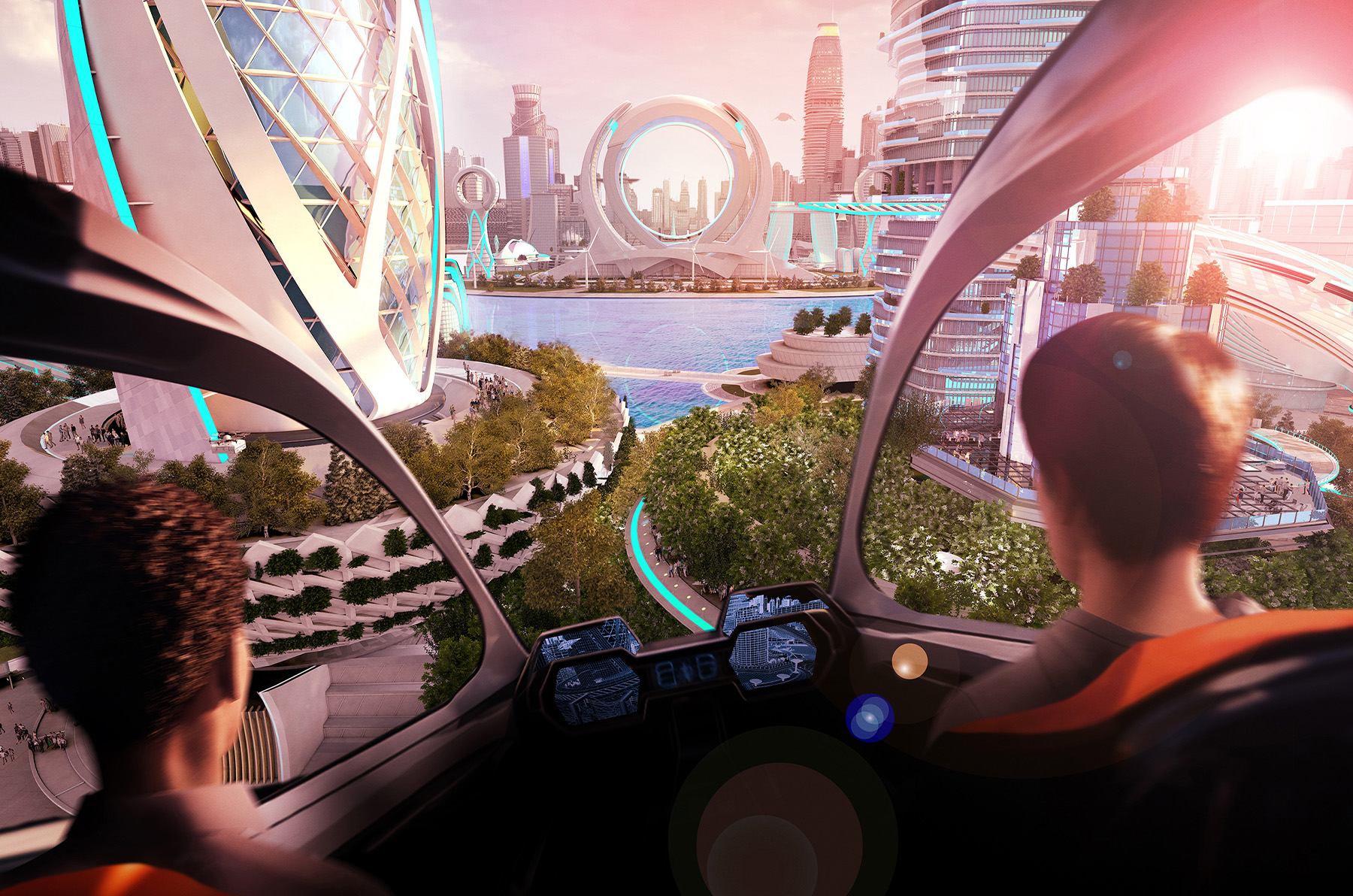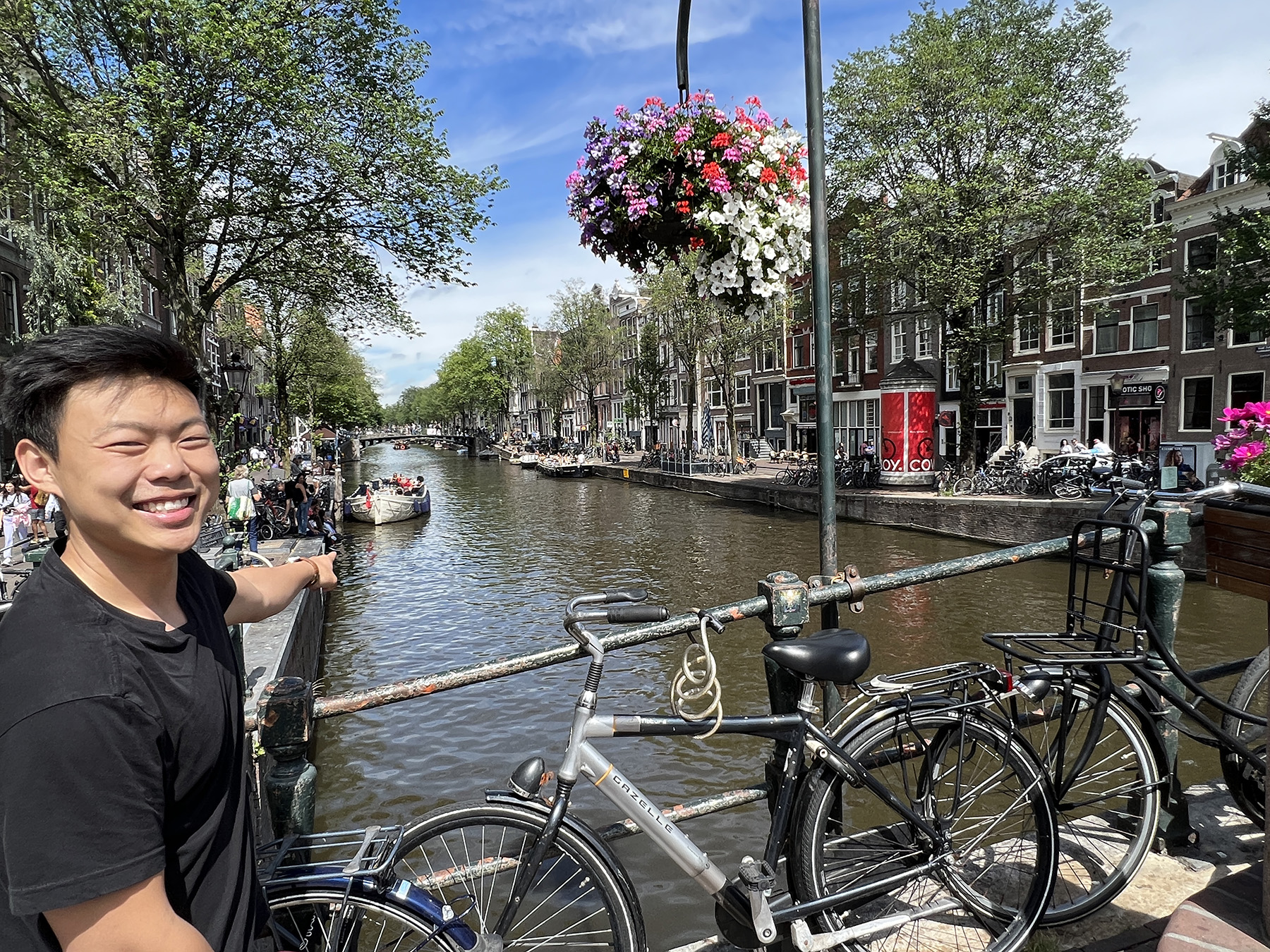
Edited by Robert L. Reid
Cities of the Future: Reimagining Our World offers an exciting glimpse into the urban future. The new IMAX movie, made by MacGillivray Freeman Films, is ASCE’s follow-up to 2017’s Dream Big: Engineering Our World, also made by MacGillivray Freeman.
The movie is scheduled to open at museums and other venues around the country on Feb. 16, following a screening at ASCE’s annual convention in Chicago in October. During the lead-up to the premiere, Civil Engineering spoke with Paul Lee, P.E., ENV SP, M.ASCE, one of the civil engineers featured in the film, to preview what the movie’s vision on the big screen might mean for the profession.
CE: What message does the film send to the various audiences who will see it, from elementary and high school-age students to engineering school students, young engineers like yourself, and even experienced engineers?
PL: The film has multiple objectives and audiences, but for everyone, the goal is to make engineering look cool and interesting. People see doctors and lawyers as the main characters in movies or television shows all the time, so this is the chance for kids, college students and even other engineers to see civil engineers on the big screen in that same context. It also gives people things to look forward to, to be optimistic about, to try to design for the future. Our present day might seem bleak at times, and people might think things are hopeless, but the film offers an inspirational message, a positive message about innovation, about what we can do, where we can go.
I’ve heard anecdotally that admissions to civil engineering programs have dropped in recent years, but for young people who want to combat climate change, be more sustainable, or build these wonderful, beautiful future cities, the movie shows that civil engineering is one viable pathway they can take.
For my colleagues who have already become engineers, the movie sends a message about all the cool engineering projects that are going on right now, which hopefully might inspire them and help them feel good about our profession. Engineers, both new and long established, can benefit from seeing how the world is changing and how the decisions they are making now can have a big impact on what cities will be like in the future.
Overall, the film is a love letter to thinking outside the boundaries!
CE: Your own career path has not followed that of a typical civil engineer — you’ve worked as an engineer in technical and governmental policy positions. How might the civil engineers who design future cities need to expand their own experience or expertise in perhaps nontraditional ways?
PL: A lot of times we think of civil engineering as a field that has discrete, specific areas. In school, we talk about our track or specialization, such as structural or geotechnical engineering. But more and more, from what I’ve noticed, civil engineers have greater roles and responsibilities as far as project management, planning, and policymaking. And there will be greater opportunities in which our work will be more intersectional, more policy related, more holistic.
Cities of the Future shows air taxis transporting people about. Well, we’re going to need civil/transportation engineers to create and apply the codes and standards of how those air taxis move in the air space, as well as regulations mandating how these vehicles interact with buildings and things of that nature. This will push the boundaries on our profession, and we may need to update the civil engineering curriculum to ensure that we have a seat at the table in designing those future cities.
One thing I’ve learned is that there is weight to the phrase: Trust me, I’m an engineer! Policymakers really do look to us for advice. Our opinions matter — so we need to be better informed and have more knowledge of public policy, even if it involves just reading up on how decisions are made. Knowing how to communicate is critical, as is understanding business strategies.
And I would encourage people to learn things outside their immediate domain, whether it’s artificial intelligence or urban planning or transportation policymaking, because those additional skills will become useful in the future in ways that are unpredictable. Whatever you’re passionate about or interested in, there surely will be an application for that knowledge in building future cities.
In my case, I’m a crazy person. I earned my P.E. license in three disciplines: civil, electrical, and mechanical engineering. And it has served me very well. When we’re in the inception stage for a wind or solar power plant, for instance, I can see the entirety of the system and how the different parts interconnect. And with electric vehicles, I have an intuition on travel/parking patterns from my civil training, but I’m also able to sense the impact of electric vehicle charging on the power grid from my electrical background. Being able to communicate across disciplines in that way helps solve the bigger problems.

Photograph courtesy of MacGillivray Freeman Films)
CE: The movie cites the need to make cities more “livable” in the future. What do you see as the key attributes or features of a more livable city?
PL: Growing up in Los Angeles, as I did, more livable to me means not being stuck in traffic all the time and not breathing in the exhaust of all those gas-powered cars! It means cleaner air and the infrastructure to make it easier to walk places instead of drive. It also means having interconnectedness and not displacing large communities to build massive concrete pieces of infrastructure.
I define livable as something that enhances human flourishing, things that let humans be humans. Interestingly, though, just because we’re talking about future cities does not mean everything will be new and different. Instead, there will likely be a mix of the new with the old, a mix of new technologies with more traditional approaches. Things like mass transit and biking or wind and solar power, which are longstanding ideas that will still be needed along with the newer approaches, such as hydrogen technology or small, modular nuclear reactors or flying cars.
In Los Angeles, we see many examples of that combination of old and new. We’re retrofitting existing buildings to be more earthquake resistant. We used to have a robust rail network, and now we are going back to it, using the existing rights of way to build out our new rail lines. We’re using existing infrastructure to the extent possible and building new when we can, in a marriage of old and new.
CE: In the movie, you travel to Amsterdam and Singapore. What can these places teach us in the United States about cities of the future?
PL: There are so many lessons! In Amsterdam, it felt as though the city designed its urban transportation system around bicycles, which I thought was wonderful because for LA, bike culture is not as supported, nor is it very safe. But if an entire city like Amsterdam can design its central systems around biking, with fewer cars in the city center, that has so many benefits in terms of public health, traffic fatalities, and carbon emissions. And there are smart buildings like the Edge in Amsterdam equipped with thousands of sensors that detect when people are inside to turn the building systems on and off, saving energy and reducing emissions.
In Singapore, the way the city integrates nature into its infrastructure is impressive! The green spaces and things like the largest indoor waterfall in the world are embedded into the infrastructure. This provides cooling and helps people feel more at ease just by being around nature. Singapore also features district cooling systems that use one HVAC system for multiple buildings. So the city is being really innovative!
CE: Cities of the Future presents a vision of what our world might be like someday, with many amazing new technologies, from air taxis to satellite-based solar power systems. What do civil engineers need to do to make sure that vision is realistic and actually constructible?
PL: Some of this vision relies on technology that doesn’t quite exist yet! And this technology can be very expensive and may have to be built following a very aggressive timeline. For instance, California wants to go 100% green energy by 2045, while LA wants to do the same thing even sooner. But if we retire our fossil fuel energy too early, we’ll be in trouble. Because if the technology doesn’t mature enough in time, there are a lot of risks and uncertainties.
I think civil engineers have a responsibility to make sure systems and structures are designed well in the first place, to understand the nuances and the risks, and to communicate the costs and feasibility with society. That way, when the elected officials and the policymakers give us the OK, we can help build things right, avoiding cost overruns or disrupting the natural or built environment too much. The key is communicating well.
CE: Any final thoughts about the film and the role civil engineers can play in designing future cities?
PL: In the movie we’ve only highlighted the things that show up well on the big screen, but there’s so much more — a whole world full of this work going on. So I encourage people to dig deeper because not everything about designing future cities involves a visual wow! There is mundane stuff as well, attending meetings or conferences, talking to each other over coffee, where big ideas can happen.
Maybe you don’t want to work on a solar panel that’s going out into space. Maybe you’re more into data analytics or coding. Well, there is certainly a need for that in building a future city. So, if the things you’re interested in weren’t highlighted in the film, just do a little more research. There’s definitely a role for you.
Robert L. Reid is the senior editor and features manager of Civil Engineering.
This article first appeared in the January/February 2024 print issue of Civil Engineering as “Designing Cities of the Future.”
Cities of the Future: Reimagining Our World is built on Future World Vision research. Want more movie-related content? Check out a podcast with Paul Lee, view the trailer, and find a theater near you.



